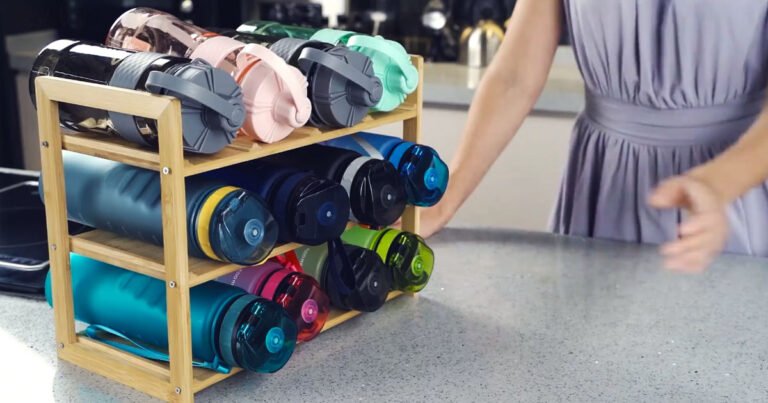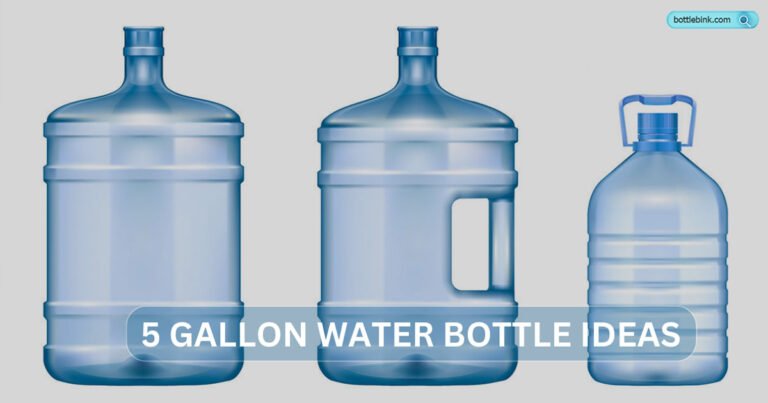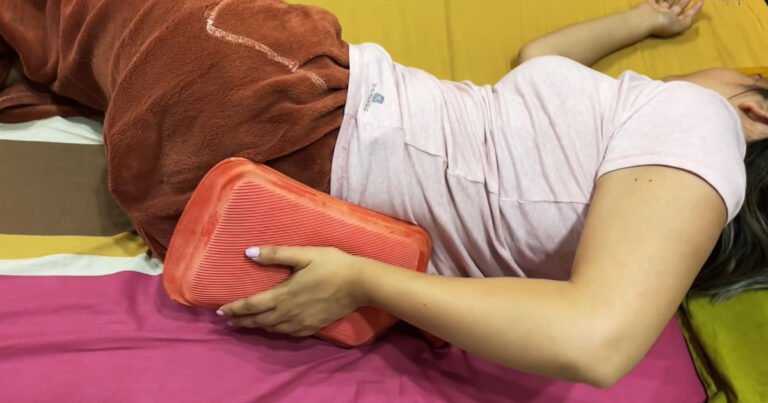How to Use a Hot Water Bottle: Ultimate Comfort Guide
To use a hot water bottle, fill it with hot but not boiling water, tightly secure the stopper, and wrap it in a towel before application. Ensure the bottle has no leaks and avoid direct skin contact to prevent burns.
Hot water bottles offer comforting warmth and can ease aches or pains when used correctly. Ideal for cold nights or as a remedy for sore muscles, they should be handled with care to avoid scalding. Ensuring they’re tightly sealed and insulated with a cover protects the skin.
Before using, always check for wear or damage and choose a bottle made from durable, high-quality materials. Their portability and ease of use make hot water bottles a popular choice for natural relief from discomfort and a cozy companion during chilly times.
Understanding Hot Water Bottles

Hot water bottles have a storied past, with origins tracing back to the 16th century. They were initially made from metal, gutta-percha, glass, earthenware, or wood. With advancement, rubber became a preferred choice in the 20th century, leading to the rubber hot water bottle we commonly find today. Diverse materials provide distinct qualities like durability, heat retention, and flexibility.
Currently, you can choose from various hot water bottle types, each suited to different needs. Traditional rubber bottles are praised for their heat retention, while modern versions might be made from silicone, PVC, or thermoplastic. Some feature fleece or knit covers for comfort, while others incorporate gel or wax for their ability to maintain temperature. Each material and design offers unique benefits, whether you seek prolonged warmth, ease of use, or safety features.
Note: Always check the material composition to ensure compatibility with intended use, whether it’s for heat therapy, bed warming, or pain relief. “`
Safety Precautions
Choosing the right hot water bottle is crucial for ensuring safety and effectiveness. Opt for a bottle that meets safety standards and is made from durable, heat-resistant materials. Checking for a quality seal or certification can provide additional peace of mind.
Preparing the hot water bottle involves filling it with hot – not boiling – water. This prevents material degradation and potential burns. Make sure to expel excess air before sealing the bottle, and inspect it for leaks each time it is used.
Regarding safe temperature and handling, the water should feel comfortably warm to the touch and not scalding. Use a cover or wrap the bottle in a towel to avoid direct skin contact. Never apply pressure to the bottle, as this might cause ruptures or leaks, and don’t use the bottle for extended periods to prevent burns.
Hot Water Bottle For Pain Relief

Heat therapy benefits include the dilation of blood vessels, which promotes blood flow, and can relieve muscle spasms and reduce joint stiffness. Heat also facilitates stretching of the muscles and ligaments, contributing to improved flexibility and overall comfort. Utilizing a hot water bottle for heat therapy targets these benefits directly to areas of pain.
Targeted pain relief applications entail placing the hot water bottle against the afflicted area, such as the lower back, abdomen, or joints. A hot water bottle’s versatility ensures that relief is accessible for various discomforts including menstrual cramps, lower back pain, or arthritic flares.
For muscle aches and cramps, a hot water bottle can be particularly effective. Gently applying the bottle to the sore region can ease muscular tension and provide soothing pain relief. Given its simplicity and non-invasive nature, hot water bottle therapy is a convenient option for those seeking comfort from muscle-related discomfort.
Improving Sleep Quality
Applying gentle heat through a hot water bottle can enhance relaxation and prepare the body for sleep. By placing a warm hot water bottle near your feet or abdomen, you can increase your body’s internal temperature, signaling that it’s time to wind down. This process can improve sleep onset and aid in achieving restful sleep.
To integrate a hot water bottle into your nighttime routine, consider the following steps:
- Fill the bottle with hot water, not boiling, to prevent burns.
- Expel excess air and tightly secure the stopper to prevent leaks.
- Wrap the bottle in a soft towel or cloth before use.
- Place the hot water bottle on your bed for a few minutes to warm up the sheets before getting in.
- Position it near your feet or lower back to enable muscle relaxation and overall comfort.
Maintain safety and temperature awareness; do not fall asleep directly on the hot water bottle to avoid prolonged heat exposure. Remove the bottle before you drift off to sleep, ensuring a safe and cozy environment.
Managing Stress And Anxiety
Heat therapy, an effective technique for managing stress and anxiety, harnesses the soothing power of warmth. By using a hot water bottle, individuals can achieve a sense of relaxation and comfort. The gentle, steady heat can help to ease muscle tension, potentially reducing feelings of stress. Place the hot water bottle against common tension areas such as your back, neck, or abdomen to feel the benefits.
To enhance the experience, consider incorporating aromatherapy. This can involve adding a few drops of essential oil—like lavender or chamomile—to the water before filling the bottle, or simply using a cloth with a few drops of oil applied to it draped over the hot water bottle. The combination of heat and therapeutic scents may amplify relaxation, providing a dual approach to manage stress and anxiety.
Hot Water Bottle For Ailments
Hot water bottles offer a simple yet effective method to soothe menstrual cramps. The warmth targets the abdomen, promoting blood flow and easing the muscle contractions. For optimal results, fill the bottle with hot—not boiling—water and wrap it in a towel before applying it to the affected area. Keep it in place for relief that can last up to a few hours.
Individuals with arthritis can also benefit from hot water bottle therapy. Heat application helps in reducing joint stiffness and pain by enhancing circulation and muscle relaxation. Integrate this into your daily routine to alleviate arthritis pain; just be sure to avoid excessive heat and never place the hot water bottle directly onto the skin.
Those struggling with digestive discomfort such as bloating or constipation may find that a hot water bottle provides a comforting solution. The warmth can help relax the gastrointestinal muscles, facilitating smoother digestion and offering comfort. Simply apply the bottle to your abdomen and allow the heat to work its magic.
Enhancing Comfort And Warmth
A hot water bottle serves as a perfect companion for those seeking comfort and warmth. Draping a cozy blanket over your lap and placing a hot water bottle beneath it can significantly enhance the warmth. Use one during bedtime to preheat the sheets, ensuring a snug and warm bed to climb into. Snuggling with a hot water bottle on the couch can turn any chilly evening into a pleasant and warm experience.
Taking advantage of a hot water bottle’s ability to provide heat can transform outdoor activities. Activities such as camping or watching sports become much more enjoyable in the cold when a hot water bottle is included. It can be a game changer for maintaining comfort whilst exploring the outdoors in lower temperatures.
Here are essential hacks for a hot water bottle to tackle winter adequately:
- Relieve muscle tension by applying a hot water bottle to sore areas.
- Improve the warmth of clothing by placing a hot water bottle in your coat or lap.
- Reduce bed dampness in humid climates by placing a hot water bottle between the sheets.
Eco-friendly Alternatives
Eco-friendly alternatives to traditional hot water bottles are numerous. You can opt for options like sustainable rubber or biodegradable materials. These alternatives are designed to minimize environmental impact and are often more durable, reducing the need for frequent replacements.
Creating your own DIY hot water bottle covers can be a fun and resourceful way to personalize and extend the life of your hot water bottle. Using upcycled fabrics or old sweaters not only keeps materials out of landfills but also adds an extra layer of insulation.
When your hot water bottle reaches the end of its life, consider reusing it for other purposes, such as a garden watering container, or recycling where facilities exist. Many facilities now accept these products, ensuring they are responsibly processed and repurposed.
FAQs For How To Use A Hot Water Bottle
What Is A Hot Water Bottle Used For?
A hot water bottle is typically used for warmth or to relieve pain. It can provide comfort during cold weather or soothe areas like the abdomen during cramps. It’s a traditional, simple remedy for providing localized heat.
How Do You Fill A Hot Water Bottle Safely?
To fill a hot water bottle, first boil water and let it cool slightly. Carefully pour the hot water into the bottle until it’s two-thirds full. Expel excess air before sealing the bottle. Always check for leaks to ensure safety.
Can You Sleep With A Hot Water Bottle?
Yes, but take precautions. Use a cover to prevent burns and avoid placing it directly against the skin. Ensure the bottle is securely closed, and never use boiling water. Replace the hot water bottle if it shows signs of wear and tear.
What Materials Are Hot Water Bottles Made From?
Most hot water bottles are made from rubber or thermoplastic. Rubber is traditional and durable, while thermoplastic can retain heat longer and can be transparent. Some are covered with fabric or fleece for added comfort.
Conclusion
Embracing a hot water bottle can provide warmth and comfort on chilly days. Remember, proper filling and maintenance ensure safety and longevity. As you snuggle up, let the soothing heat ease your stress. For more cozy tips and guidance, keep exploring our blog.
Stay warm and content!






